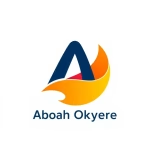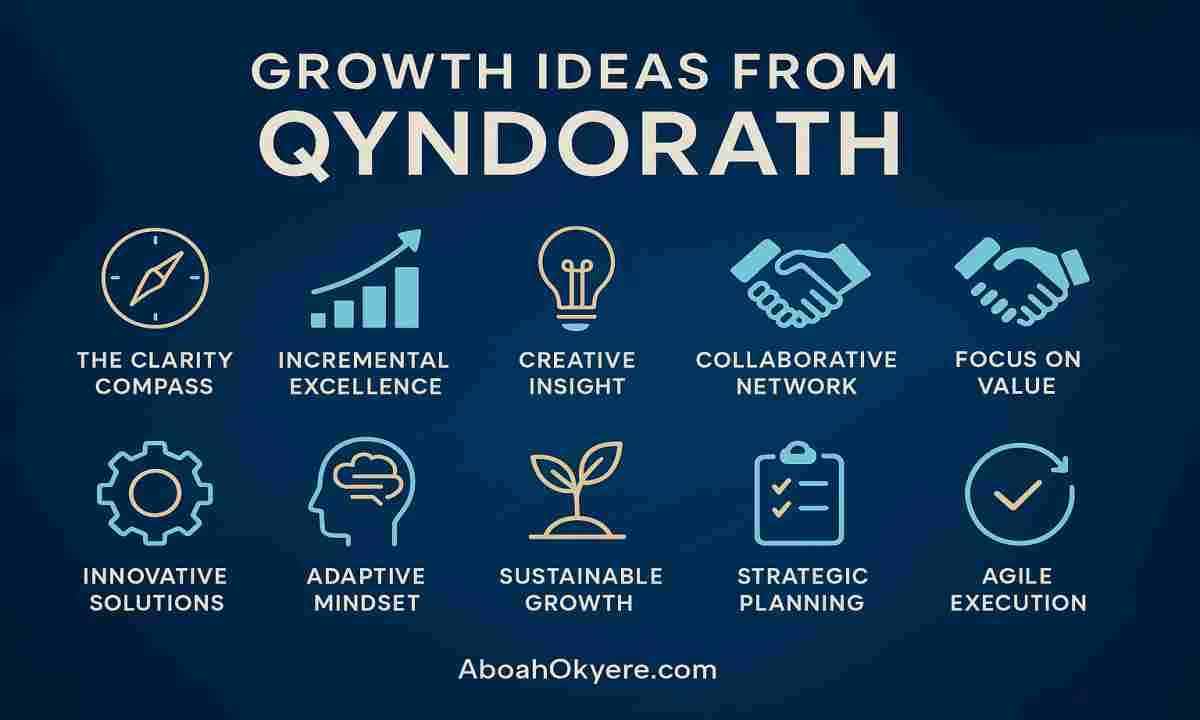Have you ever felt like your SEO efforts were just a guessing game? I certainly did when I started. The big secret I learned is that search engine optimization has changed and Ben Stace semantic SEO consultant is helping brands and individuals rank higher and double their website traffic with this change.
SEO is no longer about repeating keywords; it’s about understanding topics. This is where semantic SEO comes in, and one person who really gets it is consultant Ben Stace.
I’m going to break down his methods so you can use them to get better search rankings for your own digital marketing.
Key Takeaways from Ben Stace Semantic SEO Consultant
Here’s a quick look at what you’ll find in this guide. I’ve broken down the key ideas so you know what to expect.
- Semantic SEO focuses on the meaning and context of your content, not just individual keywords.
- Ben Stace is an SEO consultant known for his effective semantic SEO strategies.
- Building topical authority through topic clusters and content networks is a core part of this approach.
- Understanding user intent helps you create content that truly serves your audience.
- This strategy leads to more stable, long-term search engine rankings and better organic traffic.
What is Semantic SEO and Why Does It Matter for Search Rankings?

So, what exactly is semantic SEO? Think of it as teaching a search engine the true meaning of your content.
Instead of just seeing a keyword, the search engine understands the entire topic, the context around it, and what a user actually wants when they search for it. This is a big deal for your search rankings.
When a search engine understands your content on a deeper level, it’s more likely to show it to the right people. This means better quality traffic and higher authority.
I’ll show you the basic principles Ben Stace SEO comsultant uses and how this approach differs from older SEO methods.
Core Principles of Semantic SEO for Beginners
When I first heard about semantic SEO, it sounded complicated, but the basic ideas are quite simple. It’s all about creating connections and providing context so search engines see you as an expert on a main topic. You’re not just writing one article; you’re building a web of helpful information.
This approach moves away from a narrow focus on a single search query. Instead, you’re thinking about the bigger picture and all the related terms that make up a subject. It’s about showing that you understand the topic inside and out.
Here are the core principles to keep in mind:
- Focus on topics, not just keywords: Cover a subject comprehensively instead of repeating one phrase.
- Identify entities: Mention related people, places, and concepts that add context.
- Understand semantic relationships: Show how different ideas and terms connect to each other.
- Answer user intent: Create content that directly addresses what your audience is looking for.
Let me break down each of the core principles down so you get the clear picture.
1. Internal Linking Strategies Based on Semantic SEO
Internal linking in a semantic SEO context is all about creating logical pathways that show how your content is related.
You’re not just linking for the sake of it; you’re building a site structure that reinforces your topic clusters. Think of it as drawing a map for both your users and for search engines to follow.
A great strategy is to use the “pillar and cluster” model. You have your main pillar page, which is a broad guide to a topic.
Then you have your cluster pages, which are detailed articles on specific subtopics. Your internal links should connect all the cluster pages back to the pillar page, and also connect related cluster pages to each other.
This creates a powerful, interconnected hub of information.
2. Schema Markup for Semantic SEO
Schema markup is a bit more technical, but it’s a super powerful tool for semantic SEO. It’s essentially a vocabulary of code that you add to your website to help search engines understand your content on a deeper level.
I like to think of it as giving search engines a cheat sheet for my content. This structured data can help you get rich snippets in search results.
For example, you can use schema markup to tell Google that a piece of text is a recipe, an event, a product review, or an answer to a frequently asked question.
This helps Google classify your information correctly and can lead to more eye-catching search results, like star ratings or images appearing right in the SERP. It’s a direct way to communicate meaning and context.
3. Optimizing for User Intent and Search Behavior
Optimizing for user intent is at the heart of semantic SEO. It means asking yourself: “What does someone really want when they type this search query?”
Are they looking for information, trying to buy something, or navigating to a specific website? The answer to this question should shape your entire content optimization process.
For example, if the search intent is informational (like “how to brew coffee”), your content should be a helpful guide with steps and tips.
If the intent is transactional (like “buy coffee beans”), your content should be a product page with clear pricing and a purchase button.
Matching your content to the search behavior and intent of your audience is one of the surest ways to improve your rankings and satisfy your visitors.
4. Entity Optimization and Entity-Rich Content
Entity optimization is a key part of semantic SEO that focuses on connecting your content to known concepts in Google’s Knowledge Graph.
An “entity” is simply a distinct thing or concept: a person, a place, a brand, an idea. When you mention these entities in your content, you’re adding layers of context that help search engines understand your topic.
Creating entity-rich content means naturally including these related entities in your writing.
For instance, if you’re writing about “email marketing,” you would mention entities like “Mailchimp” (a tool), “open rates” (a concept), and “segmentation” (a strategy). This helps Google see that your content is comprehensive and deeply connected to the broader topic.
5. Latent Semantic Indexing in SEO
Latent Semantic Indexing (LSI) is a concept that’s been around for a while, and it’s a precursor to modern semantic search.
The basic idea is that search engines look for synonyms and contextually related words to understand the topic of a page. These are often called LSI keywords.
While the term “LSI” is a bit dated, the principle is more important than ever in semantic SEO. Instead of just repeating your main keyword, you should be using a variety of related topics and phrases.
For example, in an article about “car maintenance,” you’d naturally use words like “oil change,” “tire rotation,” and “brake pads.” Including these related terms signals to a search engine that you are covering the topic in depth.
6. Performance Tracking and Continuous Improvement in Semantic SEO
With semantic SEO, performance tracking goes beyond just checking your rank for one or two keywords. Since your goal is to build topical authority, you need to track your visibility for a whole basket of related terms.
I like to use tools that can show me how many keywords a single page is ranking for and monitor the growth of my organic traffic over time.
Continuous improvement is also key. Your SEO strategy isn’t a “set it and forget it” activity. You should regularly review your content to see what’s performing well and where there are opportunities to expand.
Are there new questions people are asking? Can you update an old article with fresh information? This ongoing process of refinement is what keeps your content competitive.
Real-World Semantic SEO Case Studies and Examples
It’s always helpful to look at real-world examples. Think about a site like Healthline.
When you search for almost any health-related topic, they are likely on the first page. This is because they have systematically built topical authority using semantic SEO principles. They have comprehensive guides (pillar pages) on major conditions, supported by countless articles (cluster pages) on specific symptoms, treatments, and related questions.
Another example is in the finance niche. A blog that wants to rank for “investing for beginners” might create a pillar page on that topic.
Then, they would create cluster content on “what is a stock,” “how to choose a broker,” and “Roth IRA basics.” By covering the topic from every angle and interlinking the content, they become a trusted resource that ranks for thousands of related search terms, often earning featured snippets along the way.
Benefits of Semantic SEO

The benefits of adopting a semantic SEO strategy are huge, and they go far beyond just ranking higher.
- Increase in User Experience: One of the biggest advantages is the improved user experience. When you focus on creating in-depth, helpful content that answers user questions, people stay on your site longer and are more likely to trust your brand. This can lead to higher conversion rates.
- Sustainable Rankings: Another major benefit is building sustainable rankings. Because you’re building true topical authority, your site becomes more resilient to Google’s algorithm updates. You’re also able to rank for a much wider range of keywords, which brings in more diverse and high-quality organic traffic. It’s an investment that builds a valuable asset for your business over the long term.
The Evolution of Search Engines Toward Semantic SEO Understanding
Do you remember what Google search results looked like ten years ago? It was a different world. Search engines used to be much simpler, relying heavily on matching the exact words in your search query to words on a page. This often led to low-quality results.
Over the years, Google’s algorithms have become much more intelligent. Thanks to developments like natural language processing (NLP) and the Knowledge Graph, search engines can now understand language more like a human does. They recognize synonyms, context, and the relationships between different ideas.
This shift toward semantic search is why a strategy focused on deep, contextual content works so well today.
Google doesn’t just want a list of keywords; it wants to provide its users with the most helpful and authoritative answer. By adopting a semantic SEO approach, you’re aligning your strategy with how modern search engines work.
Differences Between Semantic SEO and Traditional SEO Approaches
When I first got into SEO, everyone was talking about keyword density and exact-match phrases. That was the core of traditional SEO. We would pick a keyword and try to fit it onto a page as many times as we could without it sounding too strange. It was a strategy based on repetition, not meaning.
Semantic SEO is the complete opposite. It’s not about keyword stuffing; it’s about building topical authority.
You’re creating a rich resource that covers a subject from multiple angles, using related keywords and concepts naturally. The goal is to be the best answer for a topic, not just a single keyword.
Let me show you the difference in a simple table.
| Feature | Traditional SEO | Semantic SEO |
|---|---|---|
| Primary Focus | Individual keywords | Overall topic and context |
| Content Strategy | One page per keyword | Content clusters around a pillar page |
| Keyword Use | Repetitive (keyword stuffing) | Natural use of related terms and synonyms |
| Goal | Rank for a specific keyword | Become an authority on a topic |
Who is Ben Stace and How Did He Become a Semantic SEO Consultant?
You’ll hear the name Ben Stace mentioned a lot when people discuss modern SEO. He is an SEO professional and digital marketing strategist who is known for his advanced work in semantic SEO.
He moved past outdated practices and focused on what actually works with today’s smart search engines.
His approach is all about building real authority and creating content that genuinely helps people. He’s not chasing algorithm loopholes; he’s building sustainable SEO strategies. Let’s look at his journey and what makes his methods so effective.
Ben Stace’s Journey into Semantic SEO Consulting
Like many of us in the digital marketing world, Ben Stace didn’t just appear out of nowhere. His journey was built on experience and a clear understanding of how search was changing. He saw that old methods were becoming less effective as search engines got smarter.
Instead of sticking with what used to work, he focused on where SEO was heading. He put his energy into understanding how to create content that aligns with Google’s goal: to provide the most relevant and comprehensive answers. This led him to develop a deep expertise in semantic SEO.
This forward-thinking approach is what allowed him to build a reputation as a consultant who gets real results. His SEO strategy is rooted in creating value through in-depth content creation, which naturally leads to better rankings and more organic traffic.
What Sets Ben Stace Apart as a Semantic SEO Expert?
So, what makes Ben Stace a leading semantic SEO expert? It’s his focus on building topical authority in a structured way. He doesn’t just tell you to write good content; he provides a framework for how to organize that content to prove your expertise to search engines.
He has a deep understanding of how Google’s Knowledge Graph works. This massive database connects entities-people, places, things, and concepts.
Ben’s strategy is designed to make sure his clients’ content fits neatly into this graph, which is a powerful way to improve search engine rankings.
He’s not just an SEO professional; he’s a strategist who thinks about the big picture. His methods create a strong, interconnected web of content that is difficult for competitors to challenge. This focus on long-term authority is what truly sets him apart.
A Quick Snapshot of Ben Stace’s Client Success Stories
The proof is always in the results, right? The strategies Ben Stace recommends have led to significant client success stories. Businesses that adopt his semantic SEO approach often see impressive and sustainable growth, moving beyond the temporary boosts that some old-school tactics might provide.
These successes aren’t just about ranking for one or two keywords. They are about dominating a whole topic area.
When you build true topical authority, you start to rank for hundreds or even thousands of related search terms, many of which you never even targeted directly.
Here are some typical results from his approach:
- Massive boosts in organic traffic by covering a topic comprehensively.
- Securing featured snippets and “People Also Ask” boxes by directly answering user questions.
- Achieving stable, long-term rankings that are less affected by algorithm updates.
Ben Stace’s Approach to Semantic SEO Consulting

Ben Stace’s approach to semantic SEO consulting is both strategic and practical. He focuses on creating a framework that businesses can follow to build lasting authority online.
It’s not about quick tricks but about building a solid foundation for long-term success.
His method involves a deep analysis of topics, smart content optimization, and a user-first mindset.
Let’s explore some of the core values that guide his work and the key steps in his semantic SEO strategy.
Core Values Guiding Ben Stace’s Semantic SEO Work
At the heart of Ben Stace’s SEO strategy are a few core values that really make a difference. I’ve found that adopting these myself has made my own SEO work much more effective. It all starts with putting the user first.
His work isn’t about trying to trick search engines. It’s about creating a genuinely good user experience by providing the best possible information on a topic. This naturally aligns with what search engines want to reward.
Here are some of the guiding principles in his approach:
- User-First: Always create content with the end-user’s needs and questions in mind.
- Authority Building: Focus on becoming a true expert in your niche, not just ranking for keywords.
- Sustainability: Build an SEO strategy that provides long-term, stable results.
- Following Best Practices: Stick to ethical and effective techniques that align with search engine guidelines.
Key Steps in Ben Stace Semantic SEO Consultant Framework
So, how does Ben Stace actually implement his semantic SEO strategy? His framework is a logical process that takes you from research to a fully optimized web of content. I’ve tried to model my own projects on these steps because they just make sense.
The process begins with understanding the entire landscape of a topic, not just a few keywords. From there, you build out your content in a structured way that demonstrates your expertise. It’s a very methodical way to approach content creation.
Here are the key steps you can find in Ben Stace semantic SEO consultant framework:
- Topic Research: Identify the main topic and all the related subtopics.
- Topical Mapping: Create a plan for your content, often using topic clusters.
- Content Creation: Develop high-quality content that covers each subtopic in depth.
- Strategic Interlinking: Connect all the related content clusters together to show relationships.
Common Mistakes Businesses Make Before Working With Ben Stace Semantic SEO Consultant
Before businesses adopt a semantic SEO approach, many businesses make similar mistakes. I know I made a lot of these in my early days. These errors often come from an outdated understanding of how search engines work.
The most common issue is a fixation on keywords over topics.
Businesses spend a lot of time and money trying to rank for a few specific terms, but they neglect to build the broad authority that search engines are really looking for today. This can lead to a lot of frustration and wasted effort.
Here are a few common mistakes that a semantic SEO strategy helps fix:
- Keyword Stuffing: Forcing keywords into content unnaturally.
- Ignoring User Intent: Creating content that doesn’t match what the user is looking for.
- Creating Isolated Content: Writing blog posts that aren’t connected to a larger strategy.
- Shallow Content Creation: Not covering a topic in enough depth to be truly helpful.
Building Topical Maps the Ben Stace Semantic SEO Consultant Way

One of the most powerful concepts in Ben Stace semantic SEO consultant playbook is the “topical map.” This is basically your blueprint for becoming an authority on a subject. It’s how you plan and organize your content to cover all the important related topics and subtopics.
Instead of writing articles randomly, you build topic clusters that are all interconnected. This structured approach sends a strong signal to search engines that you are a comprehensive resource.
Let’s break down what topical maps are and how he builds them.
What Are Topical Maps in Semantic SEO?
Have you ever tried to become an expert in something new? You probably didn’t just study one tiny part of it. You learned about all the related concepts until you understood the whole picture. That’s the idea behind topical maps in semantic SEO.
A topical map is a plan that outlines all the related terms and subtopics you need to cover to be seen as an authority on your main topic. It’s a way of organizing your content into topic clusters, with a main “pillar” page and many supporting “cluster” pages that go into more detail.
When you create content this way, you’re not just creating individual pages. You’re building an interconnected library of information. This structure makes it easy for search engines to see the depth of your knowledge, which can seriously boost your rankings.
Step-by-Step: How Ben Stace Semantic SEO Consultant Builds Topical Maps for Clients
Building a topical map might sound difficult, but the process Ben Stace semantic SEO consultant uses is quite logical. I’ve adapted a similar process for my own work. It starts with broad research and gets more specific as you plan out your content structure.
The goal is to identify every important question and subtopic related to your main subject. This ensures that you don’t have any content gaps. Once you have this blueprint, content creation becomes much more focused and effective.
Here’s a simplified step-by-step look at the process:
- 1. Identify the Core Topic: Choose the broad subject you want to be known for.
- 2. Brainstorm Subtopics: List all the smaller topics and questions related to the core topic. Use SEO tools to find what people are searching for.
- 3. Group into Topic Clusters: Organize the subtopics into logical groups, each of which can become a supporting article.
- 4. Plan Your Content Structure: Decide which topic will be your main pillar page and which will be the cluster content that links to it.
Examples of Topical Map Success Stories From Real Projects
The results of building out a proper topical map can be really impressive. I’ve seen it firsthand on projects I’ve worked on. When you go from writing scattered articles to building true topical authority, your organic traffic can grow in ways you didn’t think were possible.
Clients who implement this strategy often see their websites start to rank for a huge number of long-tail keywords. These are the specific, question-based searches that show strong user intent. Capturing this traffic can be incredibly valuable for a business.
Here are a few examples of the success you can expect:
- A site about “cybersecurity” builds out topic clusters for “phishing,” “encryption,” and “compliance,” eventually dominating the search results for all three.
- A blog about coffee goes from ranking for a few terms to owning the topic by creating content on brewing methods, bean types, and cafe culture.
Using Semantic Content Networks to Improve Search Rankings
Once you have your topical map, the next step is to connect everything together. This is where semantic content networks come in. Think of this as the web of internal links that shows search engines how all your content is related.
This isn’t just about dropping a few random links into your articles. It’s a strategic approach to internal linking that reinforces your topical authority and helps spread ranking power throughout your site.
Let’s look at how this works and how Ben Stace semantic SEO consultant structures these networks.
Defining Semantic Content Networks for Better SEO Results
A semantic content network is essentially a group of related articles on your site that are all linked together in a logical way.
Instead of having a collection of standalone blog posts, you create a mini-ecosystem of content around a specific topic. This is a core part of modern search engine optimization.
The purpose of this network is to create strong semantic relationships between your pages. When you link from an article about “email marketing” to one about “open rates,” you’re telling search engines that these two concepts are connected. This helps them build a better understanding of your expertise.
By creating these networks, you’re doing more than just organizing your content. You’re building a structure that improves user navigation, keeps visitors on your site longer, and, most importantly, boosts your authority on the entire topic in the eyes of search engines.
Ben Stace Semantic SEO Consultant Process for Structuring Content Networks
Structuring a content network follows a clear process in Ben Stace semantic SEO consultant approach. It’s all about creating a logical hierarchy for your content. I try to follow a similar method because it ensures no piece of content is left isolated.
The foundation of the network is usually a “pillar page.” This is a long, comprehensive guide that covers the main topic broadly.
From there, you create more specific “cluster” blog posts that go deeper into the subtopics you identified in your topical map.
Here’s how the structure typically comes together:
- Create a Pillar Page: This is your main hub of information for a broad topic.
- Write Cluster Content: Develop detailed articles on specific subtopics.
- Link Clusters to the Pillar: Every cluster article should link back to the main pillar page.
- Link Between Related Clusters: Connect different cluster articles to each other where it makes sense to show relationships.
Internal Linking Strategies That Support Semantic SEO
Your internal linking strategy is the glue that holds your semantic content network together. Doing this right is important. I used to just link to whatever page I thought of first, but a more strategic approach makes a huge difference.
The key is to use descriptive anchor text. This is the clickable text in a hyperlink.
Instead of using generic phrases like “click here,” use anchor text that describes the page you’re linking to, such as “learn more about on-page SEO tips.” This gives both users and search engines valuable context.
Here are some internal linking best practices to support your semantic SEO efforts:
- Be Contextual: Only link to other pages when it provides relevant, additional information for the reader.
- Use Descriptive Anchor Text: Make your link text specific to the topic of the destination page.
- Link Deeply: Don’t just link to your homepage or contact page. Link to relevant blog posts and articles within your topic clusters.
- Support Your Pillar Page: Ensure your cluster content consistently links back to your main pillar page to reinforce its authority.
Semantic SEO Writing Tools: How Ben Stace Semantic SEO Consultant Enhances Content Creation

You don’t have to do all of this work manually. There are some excellent SEO writing tools out there that can help you implement a semantic SEO strategy more efficiently. Ben Stace semantic SEO consultant uses these tools to enhance the content creation process for his clients.
These tools can help you find related topics, analyze your competitors, and optimize your content for semantic relevance. They take a lot of the guesswork out of the process.
Let’s look at some of the features and benefits of these SEO tools.
Features and Benefits of Ben Stace Semantic SEO Consultant Writing Tool
The semantic SEO writing tools that Ben Stace SEO consultant recommends are designed to help you create content that is rich in context and meaning. I use similar tools, and they’ve become an essential part of my workflow. They help you think like a search engine.
These tools go beyond simple keyword suggestions. They analyze the top-ranking content for your target topic and show you the related concepts, entities, and questions you need to include in your own article to be competitive. This helps ensure your content is comprehensive.
Here are some of the key benefits of using a semantic SEO writing tool:
- Comprehensive Content Optimization: Get suggestions for related terms and topics to include.
- Competitor Analysis: See what your top competitors are doing right and find gaps in their content.
- Improved Relevancy: Ensure your content is semantically aligned with what users are searching for.
- Higher Chance of Featured Snippets: Get guidance on how to structure your content to win SERP features.
Practical Tips for Using Semantic SEO Tools in Everyday Content Writing
It’s one thing to have a tool, but it’s another to use it effectively in your daily content writing. I’ve found a few practical ways to integrate these tools into my process that you might find helpful. Don’t just look at the overall score; dig into the specific recommendations.
When you’re starting a new article, use the tool to help build your outline. Look at the suggested headings and related questions to make sure you’re planning to cover the topic from all angles. This is especially useful when creating a pillar page.
Here are a few tips for your daily workflow:
- Build Your Outline: Use the tool’s suggestions for headings and questions to structure your article.
- Find Semantic Keywords: Look for related terms and concepts to weave into your writing naturally.
- Check for Gaps: Before you publish, run your draft through the tool to see if you’ve missed any important subtopics.
- Optimize for Intent: Use the competitor analysis to ensure your content matches the user intent for the query.
How These SEO Tools Help Achieve Featured Snippets and PAA Boxes
Have you ever noticed the answer boxes at the top of Google’s search results? Those are featured snippets and “People Also Ask” (PAA) boxes. Securing these spots can drive a lot of traffic to your site, and semantic SEO tools are a great help in getting there.
These tools often identify the common questions people are asking about your topic. By structuring your content to answer these questions directly-using the question as a heading and providing a clear, concise answer right below it-you significantly increase your chances of being featured.
Additionally, some of these tools offer guidance on implementing schema markup. This is a type of code that gives search engines more context about your content.
Using schema for things like FAQs can make your content an ideal candidate for these valuable SERP features.
Why Ben Stace Semantic SEO Consultant Methods Work
So, why are Ben Stace semantic SEO consultant methods so effective? It’s because his SEO strategy is perfectly aligned with the direction Google and other search engines have been moving in for years. He’s not fighting the algorithm; he’s working with it.
His approach focuses on building real, lasting value for both users and search engines. This creates a sustainable path to growth that isn’t dependent on short-term tricks.
Let’s compare his approach to traditional techniques and look at the long-term benefits.
Comparing Ben Stace Semantic SEO Consultant Approach vs. Traditional SEO Techniques
I’ve already touched on the differences between traditional and semantic SEO, but let’s look at it from a results-oriented perspective.
I remember the old days of SEO feeling like a constant battle. You’d find a trick that worked for a few months, and then a Google update would wipe out all your progress.
Ben Stace semantic SEO consultant approach is different because it’s not based on tricks. It’s based on the fundamental principle of creating the best possible resource on a topic. This makes your rankings much more stable and resilient to algorithm changes.
Here’s a comparison of the outcomes you can expect from each approach.
| Aspect | Traditional SEO | Ben Stace Semantic SEO Consultant |
|---|---|---|
| Ranking Stability | Volatile and prone to algorithm updates | Stable and long-lasting |
| Traffic Quality | Can be mixed | Highly relevant and targeted |
| Content Focus | Quantity and keyword repetition | Quality, depth, and user value |
| Long-Term Asset | Pages can become outdated quickly | Content becomes a lasting business asset |
How Semantic SEO Drives Sustainable and Long-Term Ranking Growth
If you’re looking for sustainable, long-term growth in your organic traffic, semantic SEO is the way to go. I’ve learned that quick fixes in SEO rarely last. A strategy built on authority and user value, however, pays dividends for years.
When you create a comprehensive web of content around a topic, you’re not just ranking for one keyword. You start to rank for hundreds of related search queries.
This diversification of your keyword profile makes your traffic much more stable. An algorithm update that affects one keyword won’t wipe you out.
This approach creates a positive feedback loop. High-quality, in-depth content gets more engagement, which signals to Google that your site is a valuable resource.
This, in turn, boosts your rankings across the board, leading to even more traffic and authority over time.
Case Study Results: Clients Who Improved Rankings With Ben Stace Semantic SEO Consultant
The best way to see the power of a great SEO strategy is to look at the client results. The case studies from businesses that have worked with Ben Stace or adopted similar semantic methods speak for themselves. The improvements in search engine rankings and traffic are often dramatic.
These aren’t just small bumps in performance. We’re talking about businesses that go from being invisible online to becoming the go-to resource in their niche.
This happens because they stop chasing individual keywords and start building true topical authority.
Here are some typical case study results:
- An e-commerce site sees a 300% increase in organic traffic after building out content clusters for their main product categories.
- A B2B company starts capturing high-value leads by ranking for informational queries at the top of the sales funnel.
- A publisher’s blog becomes a top search result for its entire industry by creating a comprehensive topical map.
Final Thoughts On Ben Stace Semantic SEO Consultant
Understanding and implementing semantic SEO is important for improving your search rankings in today’s digital world.
Ben Stace’s unique approach not only highlights the importance of topical maps and content networks but also emphasizes the need for a sustainable strategy that adapts to both user intent and search engine evolution.
By learning from his methods, you can improve your SEO game and achieve tangible results. Whether you’re a small business or a seasoned marketer, there’s always something new to explore in the world of semantic SEO.
So why not take that next step? Subscribe to my newsletter and gain insights and keep up with the latest in SEO strategies that can truly make a difference for you.
Frequently Asked Questions About Ben Stace Semantic SEO Consultant
1. How quickly can I see results with Ben Stace’s semantic SEO strategies?
Semantic SEO is a long-term strategy, not a quick fix. While you might see some early wins, building true topical authority takes time. You can typically expect to see significant growth in organic traffic and improved search results within 6 to 12 months of consistently implementing the SEO strategy.
2. Can Ben Stace’s methods be adapted for small businesses or blogs?
Absolutely. The principles of semantic SEO are scalable and can be highly effective for a small business or a personal blog. The key is to focus on a specific niche where you can realistically build authority. This SEO strategy helps you compete by being the best resource on a focused topic.
3. What is semantic SEO and how does Ben Stace approach it differently?
Semantic SEO is about optimizing content for meaning and context. Ben Stace’s approach is different because he focuses on a structured content creation process. He uses topical maps and content clusters to build authority and ensure content perfectly matches search intent, rather than just chasing individual keywords.
4. How does Ben Stace’s semantic SEO writing tool help improve search rankings?
The SEO writing tools Ben Stace uses help improve search engine rankings by ensuring your content is comprehensive. They provide content optimization suggestions for related terms and questions. This increases your chances of earning featured snippets and proves your expertise to search engines, leading to better visibility.
5. Can you explain the main lessons from Ben Stace on semantic SEO?
The main lessons from Ben Stace’s SEO strategy are to focus on topics over keywords, build topical authority through structured content clusters, and always prioritize user intent. His approach is about creating a comprehensive, interconnected web of content that establishes you as an expert in your niche.
6. Why is Ben Stace considered a leading expert in semantic SEO?
Ben Stace is considered a leading expert because of his deep expertise in applying semantic SEO principles in a practical, results-driven way. As a seasoned SEO professional in digital marketing, he has a proven track record of helping businesses achieve sustainable rankings by building true topical authority.
7. What are some strategies Ben Stace recommends for building topical maps in SEO?
Ben Stace recommends starting a topical map by identifying a core topic and then brainstorming all related topics and user questions. He then organizes these ideas into logical topic clusters. This structured plan ensures that your content covers a subject comprehensively, which is fundamental to semantic SEO.
8. How does Ben Stace use semantic content networks to boost SEO performance?
Ben Stace uses semantic content networks to boost SEO performance by strategically connecting related articles through internal linking. This creates a logical site structure that helps search engines understand the relationships between your content, which strengthens your topical authority and improves overall rankings.
9. Are there any success stories from clients who used Ben Stace’s semantic SEO methods?
Yes, there are many client success stories. Businesses using Ben Stace’s semantic SEO methods often experience significant increases in organic traffic, secure valuable featured snippets, and achieve stable, long-term rankings. This is because the strategy focuses on building sustainable authority rather than chasing short-term gains.
10. What are the benefits of using Ben Stace’s semantic SEO writing tool?
The main benefits of using a semantic SEO writing tool are more efficient and effective content creation. These tools help you identify content gaps, find related terms to include, and structure your articles to win featured snippets, ultimately leading to higher-quality content and more organic traffic.
11. How can Ben Stace’s approach to semantic SEO help businesses stand out online?
Ben Stace’s approach helps businesses stand out by shifting the focus from competing on keywords to dominating topics. By building topical authority and providing an excellent user experience, your business becomes the go-to resource in your niche, creating a strong, defensible position in the digital marketing landscape.
12. What makes Ben Stace’s semantic SEO methods effective compared to traditional SEO techniques?
Ben Stace’s semantic SEO methods are more effective than traditional SEO because they align with modern search engines. His SEO strategy focuses on topic depth, user intent, and content optimization for context, which builds sustainable authority. This is far more powerful than the old approach of simply stuffing keywords.
Aboah Okyere is an investigative SEO content creator and truth seeker with a focus on exposing the hidden agendas of global elites, mainstream media, and powerful organizations. With years of experience analyzing public statements, leaked documents, and simulations, Aboah has built a reputation for uncovering the patterns behind headlines and revealing the real motivations behind influential figures like Bill Gates, Elon Musk, and major government institutions.
As the founder of AboahOkyere.com, he combines deep research, practical insights, and first-hand analysis to help readers make informed decisions without fear or confusion. Aboah has been tracking pandemic simulations, global health strategies, and corporate influence for years, ensuring his audience receives accurate, actionable information.
When he isn’t investigating global affairs, Aboah enjoys breaking down complex topics into digestible, human-friendly content, empowering readers to think critically and act wisely. His work has helped thousands stay ahead of misinformation while understanding how power, policy, and profit intersect in the real world.



